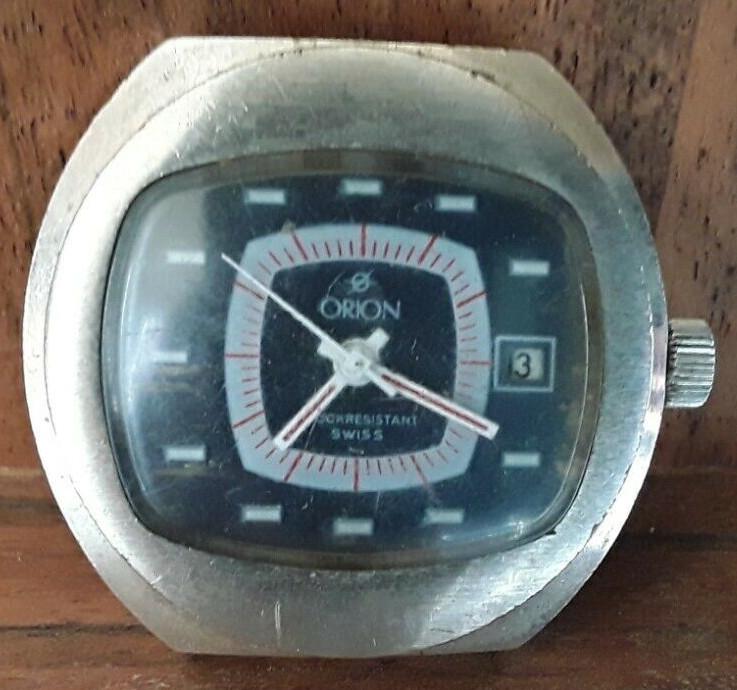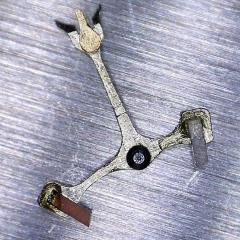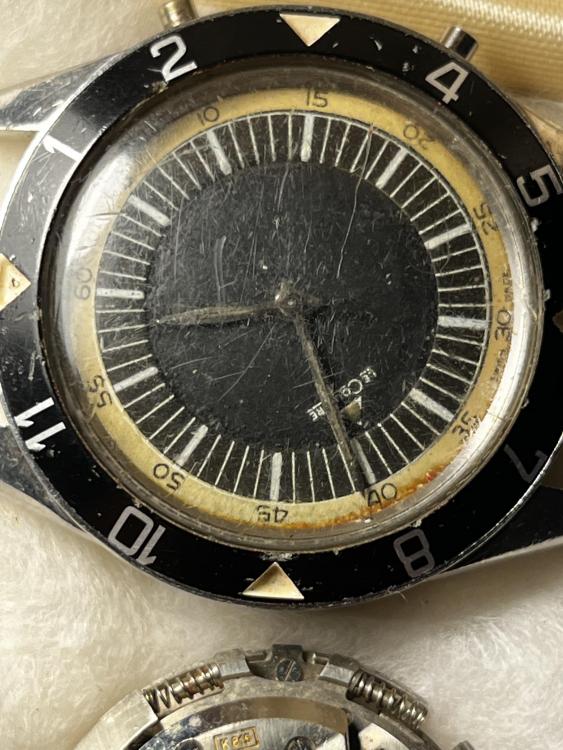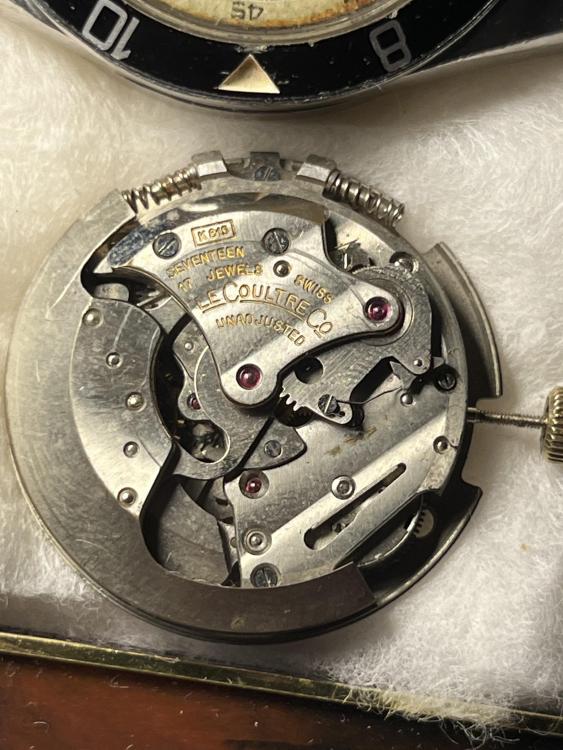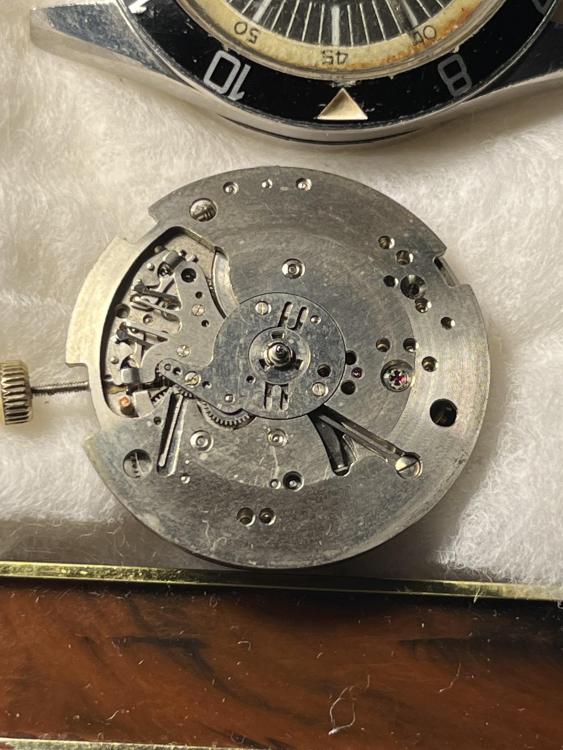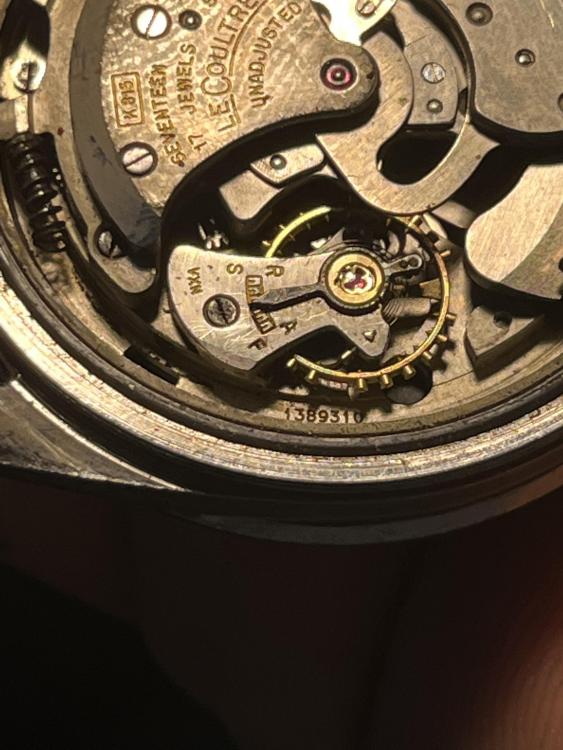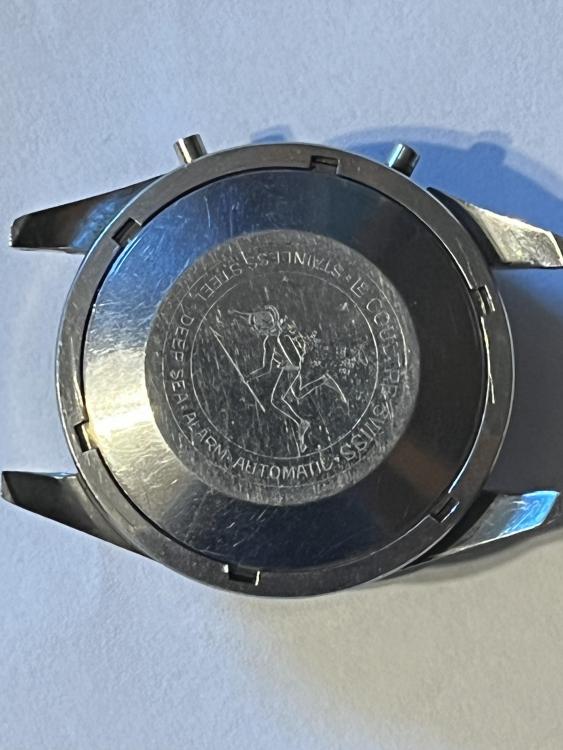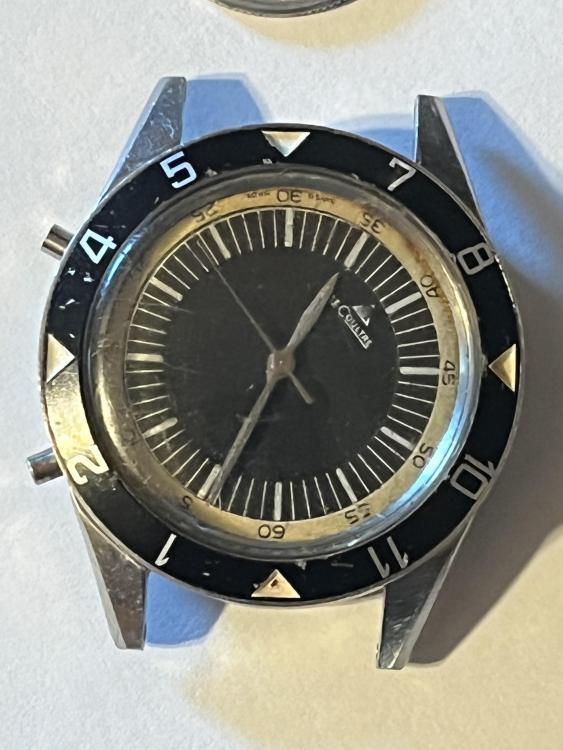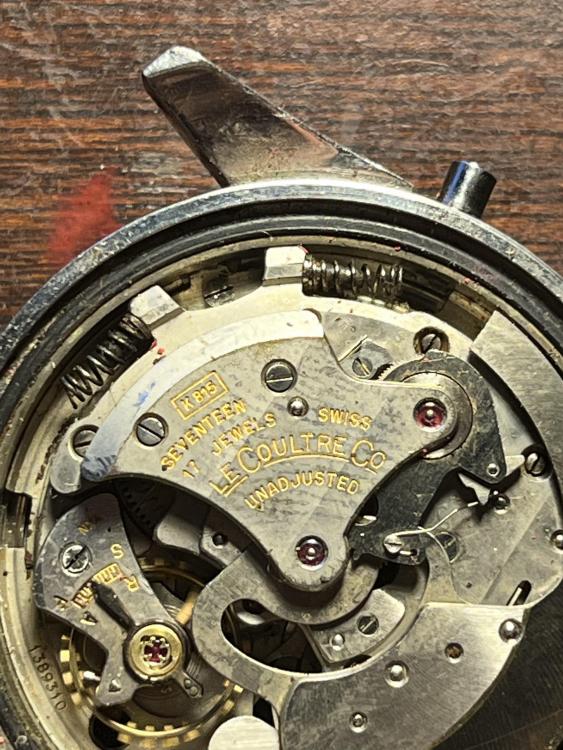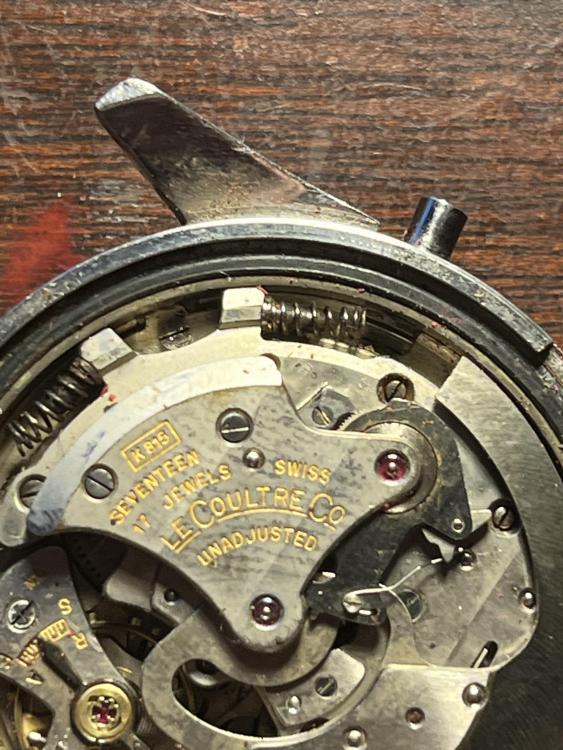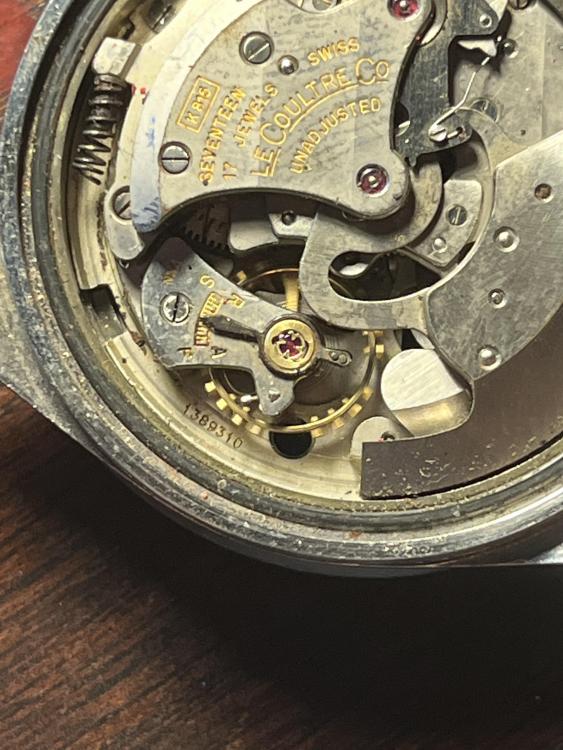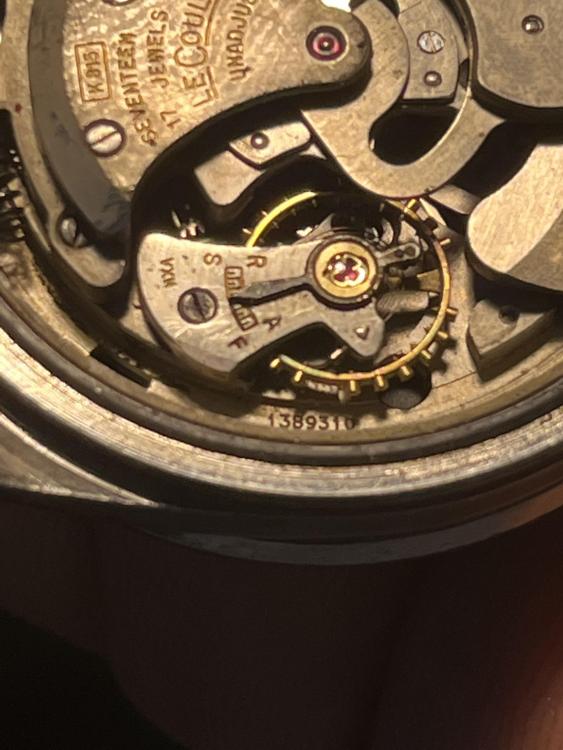Leaderboard
Popular Content
Showing content with the highest reputation on 12/11/21 in all areas
-
Im really going off sapphire crystals. All my watches that have sapphire crystals I have stopped wearing. I just don't think they add anything to a watch (apart from scratch resistance ) I have been designing and building a number of my own watches recently, and do you know what isn't on my list of must have features? You guessed it....a sapphire crystal. They are just soulless in my opinion. Practical yes, romantic no. And I want a bit of romance in my watches. A bit of tradition. Im very lucky to have a rolex submariner in my collection (don't judge), with the ceramic bezel and the sapphire crystal. I haven't worn it in ages, but I got it out the other day to give it a clean and check everything was in working order. What struck me was that after a quick wipe down it looked like new. I went through a period of wearing this thing every day, all day, no matter what I was doing. I spent a good deal of my working day under cars, or inside engine bays, fabricating stuff, welding, etc etc. Through it all I wore that bloody submariner, and there still isn't a scratch on it! On the other hand I finished building my new favourite watch about a week ago. I specced it with a big old high dome acrylic crystal because I just think they are special (almost as special as domed, flat bottom mineral crystals). Ive never seen a watch that doesn't look better with a high dome acrylic crystal on it. This evening I glanced down at it to check the time and noticed it was covered in scratches. I grabbed the poly watch, gave it a quick buff and it looked as good as new. NO, it actually looked better that new! I don't know what it is about acrylic crystals but the more you polish them the better they look. And you know what? Sitting down buffing that glass I bonded with that watch. I had to put some effort it and look after it, and now I can't stop looking down at the beautiful reflections on the glass when the light hits it in just the right way. I think I never really bonded with the submariner because it was too easy. I never had to put any effort it. It left me cold. I just don't think ease of ownership makes an item special. Out of all the cars I've owned my favourites certainly weren't the most reliable ones. Sometimes I think we appreciate things more when we have to look after them. It feels like something that is perhaps being lost in more recent times. Everything feels a bit more 'throw away' than it was when I was growing up. When I was younger it was common to spend your free time taking care of your valued possessions, because you worked hard for them! Whats wrong with polishing your shoes every morning, and waxing the car on Sunday?! Sapphire crystals are very convenient, very practical. But I think ill take a pass.2 points
-
Fortunately this is straightforward too. I believe the movement in these lady Sekondas is a Chaika 1601A : https://17jewels.info/movements/c/chaika/chaika-1601a/ As such this should have a 0.90mm diameter stem size (also referred to as Tap 9). On the assumption you're fine to have a replacement crown that looks similar then just search for a term like 0.90 crown on ebay and take your pick (or look on Cousins etc.). Be aware of other dimensions like height and width too. Circa 5mm diameter is typical for a small watch like this. [But ask the owner ... if they found the original crown a bit small and have a preferred crown size then no reason you can't match that]. With the stem pushed in just mark with a felt tip the protrusion from the case. Take the back of the watch off and remove the stem. This looks fine and intact from your pics. You'll do this by pulling the stem out to the time change position. Now, whilst applying light pulling pressure on the stem, loosen the stem release screw. This is the very small screw on the left in the movement picture from the URL above. It's usually a 'turn and a bit' before the stem is released but I'm giving you the apply light pressure tip as you don't want to unscrew more than necessary and too far as that's then a dial off situation to reseat the screw! Now screw the crown on the stem. Ideally you want a drop of Loctite on the end (but superglue will do) so the crown isn't lost again. Don't screw beyond your felt tip mark though (assuming your replacement crown might not be identical to the original). Now put the stem with crown back in position and tighten back up the stem release screw. That's it! Happy days!2 points
-
2 points
-
There are many vintage movements that were made in the millions by makers who are no longer in existence. If you are working on commercial grade watches from the mid 20th century there's an excellent chance that one of the supply houses will have whatever part you need. If you have something more high end and rare like LeCoultre, Patek Philippe, AP, etc., parts are very hard to come by. What's a bigger problem is getting parts for fairly recent watches, as the bulk of companies have decided not to supply spare parts. So, actually your best bet is probably working on the mid 20th century stuff, movements made by Felsa, Fontainmelon, A.Schild, ETA, and others, made in mass quantities (only ETA still exists), and at a time when spares were provided and supply houses still have stock.2 points
-
No need to scan the manual somebody else did it for us. I've attached the service manual a specification sheet and the bonus parts list. The reason I use the word bonus is that the parts list came with the boxes of the material. Siege to the various watches at least the tuning fork watches would have a box with a lot of envelopes and due to have these cards that showed you the parts. So here is where someone scanned in all the cards and made a nice PDF for us. I'm probably being nitpicky here but when I think multimeter I'm thinking analogue and if somebody use the word digital multimeter then the fluke would qualify. Accutron 218 --Manual.pdf Accutron Parts 214 218.pdf Accutron_Specifications.pdf2 points
-
2 points
-
By my observation, virtually everything is known to cause cancer in California. CA has cornered the market on warning labels.2 points
-
Hey all, I inherited this 1959 deep sea alarm. I’m very excited about having it restored. Ideally I would love to find someone in Florida who would allow me to be apart of the process as this is something I’m not ready to tackle. I told my mom I’m getting into watches and asked her to keep an eye out as she thrifts and yardsales. She said I have a couple of cheap ones of your grandfather’s. I was shocked when I looked up LeCoultre. It’s in rough shape and I want to get her ticking correctly again. I know it needs a full service and am not sure if the alarm works but the watch runs a bit. I have purchased a k815 caliber of eBay as a donor in the event I need parts. I am waiting on some jlc crowns and nos stems(found the service bulletin for the k815 on here.) I’m looking for guidance on finding the right watch maker to do it. I have emailed with Zaf of classic watches.com but mailing this thing scares the hell out me.1 point
-
Probably true but still worth taking the measurements and looking to see if anything is close. We do have listings of staffs by size is there might be something really really close. Then sometimes companies use the same staff for multiple generations sometimes. Then if none that works you might still find a staff that's really close that you just have to modify something versus making an entire new staff. How do curiosity why would re-pivoting to be a cheaper option occasionally?1 point
-
Thanks VWatchie! Wow that is a great looking micrometer no doubt! I think I may have to invest in a bench micrometer as well in the future for projects such as this. Yes I had a little trouble keeping the thickness consistent throughout the thinnest portion of the spring. I held the piece upside down in a hand vise while filing because upside down was the only way to grasp the piece enough while filing. Before I knew it the piece was so thing that I couldnt file the middle anymore without the possibility of snapping it. So I will work the top more next time before moving to the bottom. Would you have a recommendation as to what kind of stone I should consider?1 point
-
Have another go! I'm sure your second attempt will be even better. try to keep the thin section at a consistent thickness. If you used a file so far, maybe try with a stone?1 point
-
Hey there, thanks for your interest. I'm starting slowing to work on the project. I will post on this thread once I have something I can show. I will also try to reach out Ranfft, to know if I can use the data.1 point
-
1 point
-
On common, contemporary watches, crystal sizes not ending .0 or .5 are rarely used. So you start looking at the glass size, not the gasket. Not always. I normally fit them being of the same size.1 point
-
Definitely not a true statement? Providing the watch is repairable? A lot of watches for Variety of reasons will wear out and the ability to repair Whether you had the parts or not is problematic. But the existence of parts has little to do with whether the company exists or not. As mentioned above a lot of watches were made in extremely high quantities and there's lots of material out there. You look at things like American pocket watches the companies do not exist. The companies as far as spare parts go haven't existed in some time. Yet you look on eBay brand-new original American pocket watch parts are available. I was find it amusing that a lot of times the original American pocket watch mainspring is much nicer than the modern replacement mainspring. A lot of times they will fit much better that's another reason for using an original part. So parts are available irrelevance of whether a company exists or not it just depends on how many parts were made and for a lot of the companies the quantity of parts was extremely huge which is why they're still out there.1 point
-
I assume you mean actual glass, not acrylic, and a plastic gasket? The glass should be 0.1 mm wider than the inner diameter of the gasket.1 point
-
One of the problems with the interchangeability idea it is if you of a box of 50 balance completes and providing they been package properly so they were damaged in some way would they be labeled? How many separate watches separate balance wheels were made the beginning of time until now? Typically you can look at the balance wheel and tell what watch it comes from. They can make minor gases sometimes like typically American pocket watches have serial numbers on them. You can look at the stud on the hairspring until sometimes by that who made it. Then you go to the pocket watch database and see what watch it belongs to. But generically looking at a box of Swiss balance wheels trying to figure out what it goes to is very problematic. On the other hand having a box of miscellaneous American balance wheels is nice if you need timing screws or sometimes even the roller jewel. Then you didn't ask this question but typically the hairsprings do not interchange. There are minor exceptions where you can swap hairsprings but typically each balance wheel gets its own personal hairspring and you typically can't swap between balance wheels without having gross timing adjustments that you probably can't do. I have a link below interesting website is extremely useful. Starts off innocent enough Three separate links depending upon the letter of the watch company you're looking for. So many names which one to choose for the example? Let's have some fun let's look at Rolex. That's the last lake then you get a list of all the various names find Rolex click on that randomly what number looks interesting? Then that while were here we got to the Rolex list notice that it uses just the letters ROL that's because this is the designation that bestfit has. There is a best fit website but that's a pay site. There's also a book that goes with bestfit you can find that online or download but it doesn't use the three letter Representation So notice even for Rolex they had quite a few different movements over time.Too many choices but let's go with this one ROL 1055. Now you get a complete listing of all the parts that might have been available at one time. Not that you can order any of these Rolex they don't like us so they won't sell to us anyway. But do get part numbers A heck of a lot of those numbers are highlighted in pink that means are not available. At one time bestfit the other company I mentioned is to package up Rolex parts which meant you could buy generic parts in a bestfit package at a fraction of the cost. But or talk about balance complete so let's click on balance complete And we find out that four separate watches use the same balance complete. Plus we get a part number which isn't going to do us much good but? Then depending upon where you are in the planet as I suspect this is not universal if they're out of the part you could try another material house.So for instance once you have your part you go here second link When you're on the second link I got a different number I just picked one that said it was still available which is sometimes problematic 723/498 . That gives you a page with a image which has a price and if you click on the image You find the inevitable excitement crashing to an end it's out of stock but it was the balance staff. But it also have a cryptic note which says STAFF, USE 100/1568? In case you're curious the first digits before the/Ari parts designation tell you what it is and in the case of the number 100 I believe that's a bestfit designation? But let's have a laugh let's see what happens If we search for a new number and apparently is available.For $11.50. One of the interesting problems is that at one time and they still do it their OEM companies basically making movements. Then lots of people will buy that movement sometimes the keep the original movement number on other times the put their own number on. Sometimes like Bulova they'll sell their own parts in their own envelope with their number. Which means conceivably you can have one really popular movement a whole bunch of parts for that for a popular movement with every envelope adding a different part number for each of the companies. Then a company like bestfit and others come along and do a cross reference at an end up with one part number for all the rest. http://cgi.julesborel.com/ http://www.julesborel.com/1 point
-
The stem is part of the case rather than the movement with this kind of pocket watch. Any size 16 hunter case would have a stem that should work.1 point
-
Thanks Plato for the encouragement! Yup I’ll give it another go. I guess thats a positive out of these situations, you learn what to do better with the next one1 point
-
Within a single brand and family of movements there is sometimes a little interchange. For example, The Seiko 7S26 and 7S36 share the same balance. Conversely, in the soviet days, Poljot, Raketa, and ZIM all made movements they called "2609", and they are similar, but will interchange parts result in a watch that runs as well as a new one from any of the 3 factories? I wouldn't bet much money on it. I have a 50 year old Beijing watch with a balance complete (including the cock) that is visibly from a smaller movement. Does it run? Sort of, but not for long. You're talking about whether a Volvo distributor cap will work in your Subaru. It won't even bolt on. To further use a car analogy - from 1999 to 2005 VW/Audi/SEAT/Skoda built a lot of cars with "1.8T" engines, and if you're rebuilding you can use a head from a 2000 VW Golf 1.8T in your 2004 Audi A4, but you'll need to transplant all of the variable valve timing stuff from your old audi head into the vw head, and you might have to drill some really specific holes. Hyundai made some 1.8T engines too. There is 0 interchange between them and the VW/Audi engines. Maybe the battery if you don't need it to bolt down correctly.1 point
-
I have to work on a cap jewel I found, diameter is a bit big and i have to create the beveled edge "as usual". Not sure if it will work or not, i don't know how the original looked like.1 point
-
Hi Ross. Mixed spares like that for watches are often worthless for watches which are made in the 21st century. Modern watches are like JDM analogises - like car parts and therefore most often unique and specific to the movement brand and model. It’s different when it comes to pre-1900 watches and clocks where parts are hand made and you may wish to adapt an existing part to create a replacement. This can be very difficult.1 point
-
The same point that is in selling a mixed lot of e.g. used pistons taken from dismantling different petrol enginees. Even if the idea is that some may be usable by someone, they come without specifications or guarantees of any kind.1 point
-
1 point
-
Don't worry @MattyG, you can introduce yourself when and if you feel like it. More important then is to be an active member with lots of questions, info, and posts! After all, that's the best way to get to know each other. Please feel welcome by me (and many others I'm sure) without a formal introduction!1 point
-
I have seen and heard of several variants of this cap jewel cleaning method, but none of them have felt really safe so I invented my own variant and was so happy with it that I recorded a video of it. Hope you like it and get use of this "safe" method for cleaning cap jewels.1 point
-
Hi Probably the sensible thing to do if you dont feel confident enough to do it your self. There is no point in hacking up a good watch, hope you are sucessfull in finding a repair. Cheers1 point
-
A split stem would pull out as it's designed for that, however is worth to remember that a zero force method is often possible and preferable, while slowly rotating the crown, gently lift the edge of the dial nearest to the stem. When the joint is vertical, wiggle the mov.t a bit more and it should come up. Doing this reverse is even more important when refitting a split stem, as the joint will break if pressure if given when not perfectly aligned.1 point
-
If it is a true front loader the split stem should pull out as its in two parts and then the bezel spilts off the case allowing you to move the movement out with the inner part of the stem attached to the watch. Once out you can then remove the second half of the stem . You will have to carefully explore the bezel rim for an indent or marks from a previous repair or battery change.1 point
-
By the look of the pictures you have to split the bezel from the case, from what I cam make out one side has to be removed to gain access to the other movement, I think its the white dial side once removed you somehow gain access to the stem release to be able to lift out the movement. I think the movements will either be ETA or Miyota as rotary used both. The higher end watches used the ETA. So my conclusion is to remove the bezel (white dial) and proceed from there. but be careful in every way1 point
-
Hi I have done a little digging around not having handled one of these before and on one forum it was recommended that you remove the smaller of the two to gain access. I shall continue to look and will post any other information I find. Can you remove the watch head from the strap and post picture of both winders. cheers1 point




